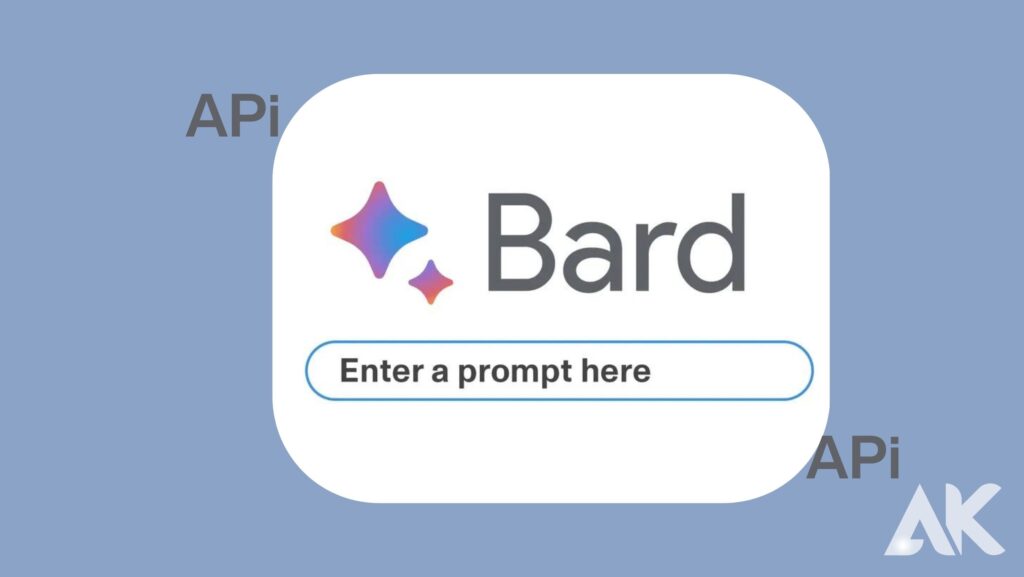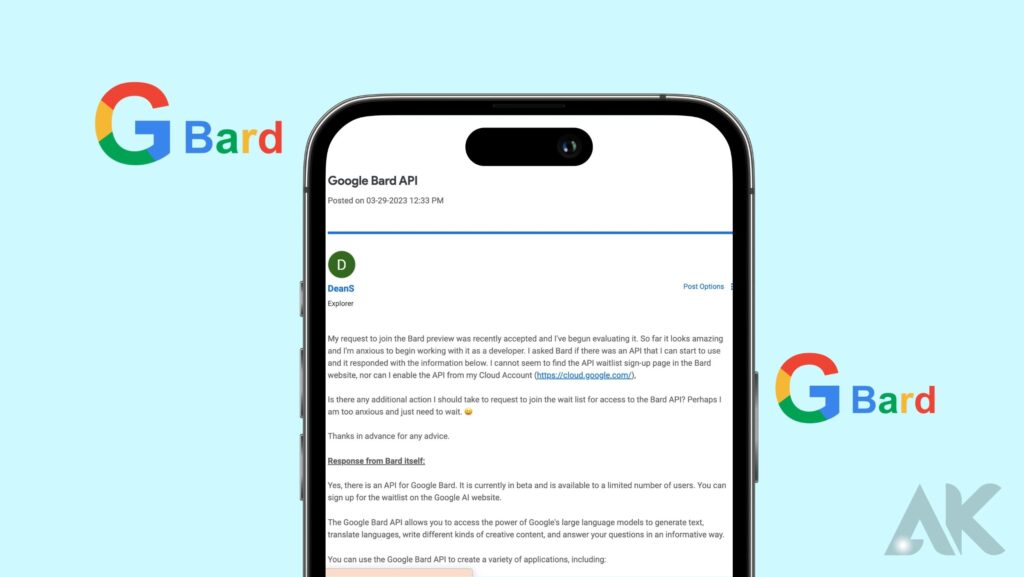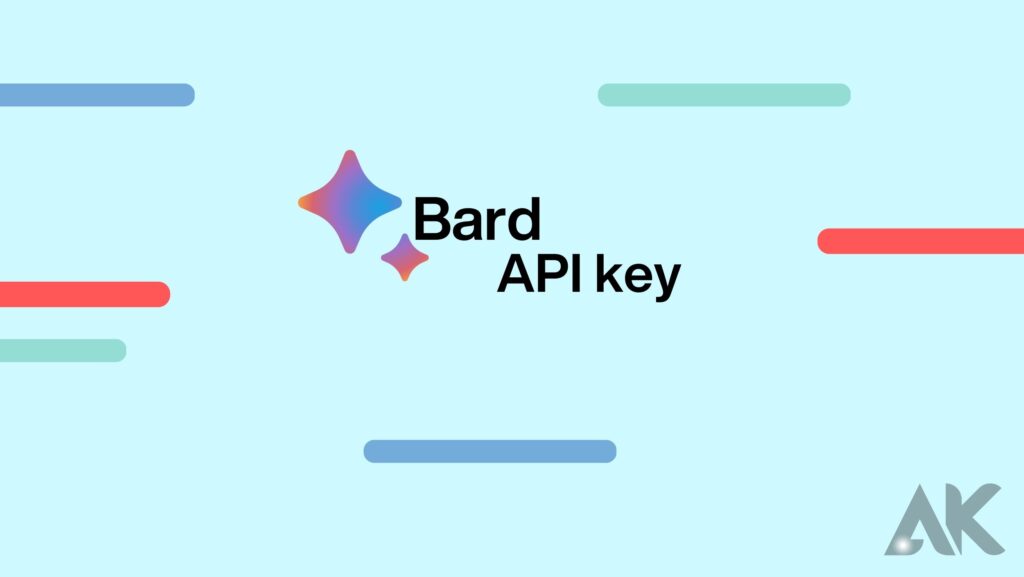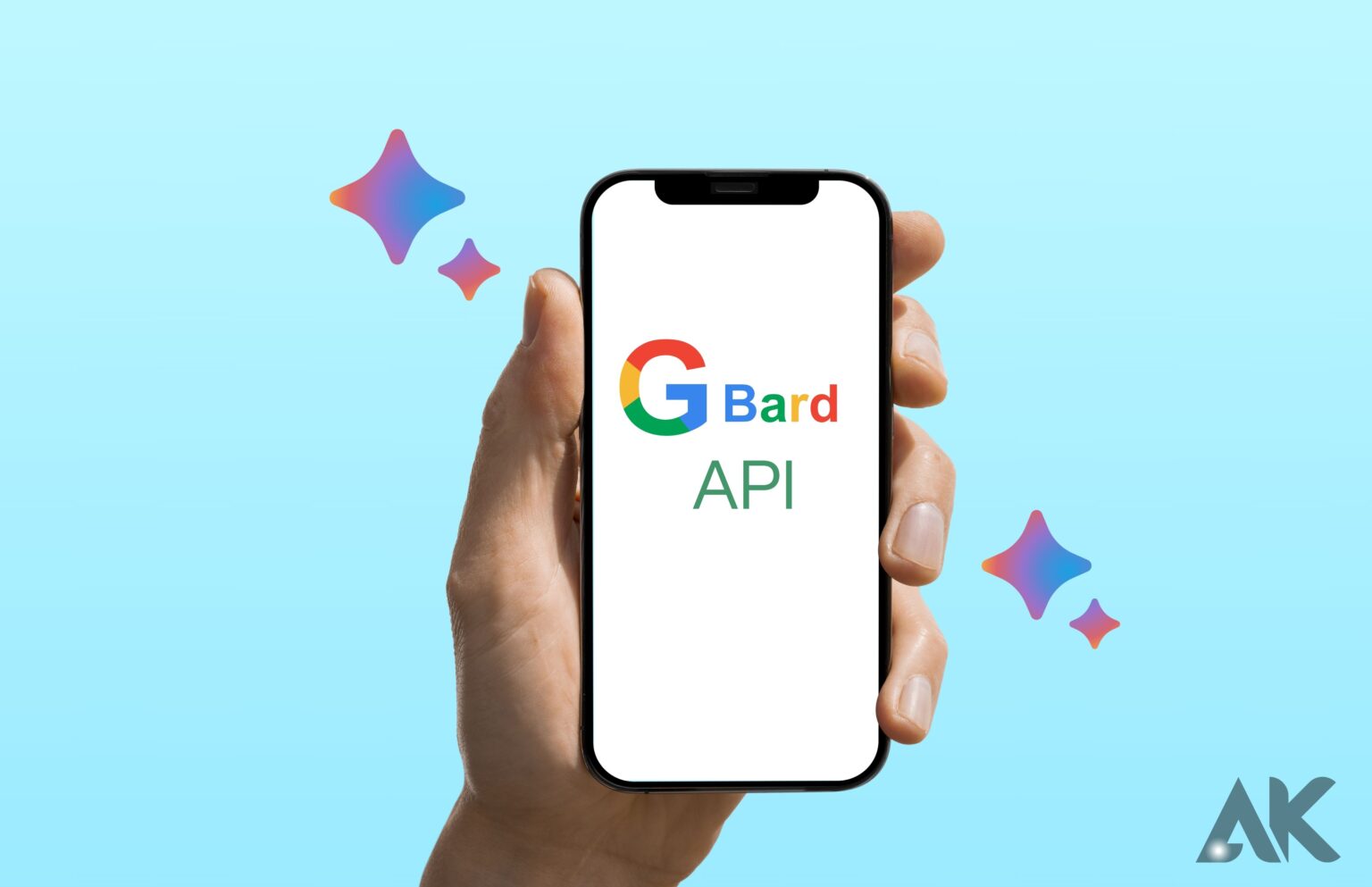With the help of the robust Bard API, developers can leverage the potential of Google’s extensive language model Bard to produce text, translate across languages, create a variety of artistic material, and provide insightful answers to queries. To begin using Bard API, the user must first provide a text prompt. This prompt might be as easy as a question or as difficult as a task. The Bard API then responds to the prompt by utilizing its understanding of the world and its linguistic generation capabilities.
Why use Google Bard API?

You may wish to use Bard API in your apps for a variety of reasons. Here are a few instances:
- To generate text: Emails, letters, scripts, poetry, code, and other types of text may all be produced using the Bard API. This may be helpful for several activities, including developing new AI apps and producing content for websites and social media.
- Language translation: Text may be translated between more than 200 languages using the Bard API. This may be helpful for people who need to translate documents or other materials, as well as for companies that need to speak with clients in other languages.
- To respond to inquiries: Bard API may be utilized to provide thorough and educational responses to inquiries. This can help make instructional apps or for building chatbots and virtual assistants.
I desire you to connect with me on various social media platforms if you’re ready to go deeper, discover fresh viewpoints, and become a part of a community of enthusiastic learners.
What is the Google Bard API

The Google Bard API is a potent tool that uses machine learning and natural language processing (NLP) to produce writing that is intelligible and coherent depending on a particular context. The API may be used for many different things, such as creating content, chattingbots, and virtual assistants. To produce responses that are contextually appropriate to the supplied text, the Bard API uses a deep learning model that has been trained on enormous amounts of text data. English, French, German, and Spanish are just a few of the languages in which the API may generate responses.
Does Bard have an API key?

Indeed, to authenticate and grant access to the Google Bard API, you need an API key. To get entry to the API, fulfill the subsequent actions: Launch a Google Cloud Platform (GCP) project: You may use the Google Cloud Console to start a GCP project if you don’t already have one. To activate the Google Bard API, go to your GCP project’s API Library and choose the Google Bard API.
Configure authentication: To authenticate your requests, you must first create a service account. Locate the JSON key file associated with the newly created service account in the IAM & Admin section of the Google Cloud Console.
Make API calls: You may start requesting Google Bard API from your apps by putting the API key and JSON key file in your hands. Incorporate the API key into your requests for authentication.
How to Get Bard API Key?
You need an API key to use the Google Bard API. The procedures to acquire an API key for the Google Bard API are as follows:
- Make a Google Cloud account if you don’t already have one. Visit https://cloud.google.com/free to sign up without cost.
- Make a new project in the Google Cloud Console. Name your project and select a billing account to associate with it.
- Permit the usage of the Bard API in your project. To accomplish this, go to the API Library in the Google Cloud Console and enter “Bard API” into the search field. Click “Enable” once the API has been chosen.
- Create a new API key. Go to the Credentials page in the Google Cloud Console and choose the “Create credentials” option to generate an API key. Choose “API key” from the dropdown menu and follow the instructions to generate a new API key.
- Your API key should be copied and stored securely. You must utilize this API key in your application to authenticate with the Google Bard API.
How to Use Bard API?
Let’s look at how you may utilize your Google BardAPI API key in your apps now that you have one.
You need to grasp the basic process before you can start using the Bard API. The API uses a simple request-response model to function. The API receives a text prompt from you, and based on the input, it generates a logical and pertinent response.
Here’s a detailed tutorial on using the Google Bard API:
Install the dependencies and libraries that are required:
Installing the required libraries and dependencies in your programming environment is a prerequisite before using the Bard API. Python, Java, and JavaScript are just a few of the computer languages for which Google offers client libraries. The Google Cloud website has the necessary installation instructions and documentation.
Authenticate your application:
To authenticate your application with the Bard API, you need to include your API key in the API call. This ensures that only authorized users may use the API. Preserve your API key and don’t share it with anybody.
Construct your API request:
Create an API request with the necessary parameters to generate text using the Bard API. The primary argument is the “prompt” field, where you provide the initial text input or context that the API needs to generate a response. It is also possible to provide other parameters, such as the model to use, the maximum response length, and the temperature (which controls how unpredictable the generated text is).
Send the API request:
Once your API request has been built, you may send it using HTTP POST or the equivalent method that your client library has provided to the Bard API endpoint. The prompt and arguments you provide will be used by the API to process your request and produce a response.
Handle the API response:
After obtaining the API answer, you may obtain the generated text from the response object. You may then utilize this generated text wherever you like within your software. It is necessary to handle any errors or exceptions that may occur during the handling of API requests and responses.
Iterate and refine:
Although the BardAPI is an effective tool, achieving the intended outcomes may need some trial and error to fine-tune your prompts and settings. Adjust the temperature, try various inputs, and evaluate the outcome to produce the finest possible text production for your specific use case.
It is important to acknowledge that the Bard API is a compensated service, with fees based on factors such as the quantity of written text and the frequency of API requests. Go over the Google Cloud Pricing guide to find out how much using the Bard API will cost you.
Details of Google Bard API
The Google Bard API is now in beta testing; as the API develops and receives feedback from developers, these pricing factors may alter. See the official documentation or announcements from Google on the availability and pricing plans of the Google Bard API to obtain the most latest and accurate pricing information.
Bard API Documentation
The official Google Bard API documentation is available on the Google Cloud website. The documentation goes into great detail on the request parameters, response formats, endpoints, and features of the API. To facilitate the seamless integration of the Bard API into your applications, it also provides code samples and suggestions.
Here’s how to get to the BardAPI docs step-by-step:
- Go to Google Cloud: Open your web browser and type https://cloud.google.com/ to see the Google Cloud homepage.
- Go to the Google Cloud site and select the “Products” option located in the upper-left corner to view the Bard API documentation. Either use the drop-down option to search for “Bard API” or scroll down to the “Artificial Intelligence” section and choose “Natural Language and Translation.” This will direct you to the Google Cloud website for Natural Language and Translation APIs.
- From the list, choose Bard API: Go to the Natural Language and Translation APIs page and scroll down to the Bard API area. Click the “Read the documentation” button or the Bard API link to get the specific documentation for the Bard API.
- Explore the Bard API documentation: This will take you to the page where you can find detailed information on the features, authentication procedures, and usage guidelines of the Bard API. Explore the many sections of the documentation, including the ones on authentication, API references, and code examples, at your own pace.
- Samples and instructions for access code: Bard API documentation often includes code snippets and examples in a variety of programming languages, including Python, Java, and JavaScript. You may be able to learn how to utilize the API and incorporate it into your apps by following these examples. Additionally, the documentation can provide best practices and advice to help you get the most out of using the Bard API.
By reviewing the official documentation, you may gain a deeper comprehension of the Bard API’s functionalities, discover its possibilities, and effectively utilize it in your applications. It is recommended to check for the most recent version and study any pertinent release notes or revisions provided by Google, since the material may be changed and enhanced over time.
Bard API key for Android
Get an API key and add it to your project to use the Bard API in an Android app. This is a detailed guide that will walk you through getting and using a Bard API key for your Android app:
- Make a project on Google Cloud: Using the Google Cloud Console at https://console.cloud.google.com/, you may start a new project or select an already-existing one.
- To activate the Bard API, navigate to the Google Cloud Console’s API Library and look for the Bard API. Click the API and then the “Enable” button to turn it on for your project.
- Configure API credentials: To configure API credentials, navigate to the Google Cloud Console’s Credentials page. When you click the “Create Credentials” button, choose “API key” from the selection menu.
- Limit the usage of your API key: It is recommended that you restrict the use of your API key to prevent unauthorized access. You may do this by giving the SHA-1 fingerprint of your app’s signing certificate and the name of the Android package.
- How to get the API key? Copy the API key from the Google Cloud Console when it has been generated. Because the API key grants access to your Bard API usage, take care to keep it secure.
- Add the API key to your Android application: Open your Android project in Android Studio. Create a new XML file called credentials.xml (or any other name of your choosing) in the res folder of your project. To that file, add the following code:
- Access the code’s API key: You may use the following code snippet to access the Bard API key in the code of your Android app:
- Use the API key in API requests: When calling the Bard API from your Android app, be sure to include the API key as a parameter in the request. The Bard API documentation contains information on the specific API endpoints and parameters you should use in your requests.
In your Android app, keep in mind to handle and save your API key according to the best standards. It is preferable to get the API key via secure storage or encrypted sources rather than hardcoding it straight into your code.
You may harness the power of natural language generation in your mobile application by following these steps to obtain a Bard API key and integrate it into your Android application.
The features of Google Bard API
Users may connect with Google Bard more easily and conveniently thanks to the capabilities that the Google Bard API offers. Among these characteristics are:
- a straightforward REST API that takes user messages and JSON queries with a session ID.
- a quick and expandable service that can manage several requests coming in at once from several users.
- A substantially less computationally demanding variant of the LaMDA model that is lightweight allows Google to grow to a larger user base and offer more feedback.
- An API endpoint can be secured against unwanted access by using a user authentication key.
- an online tool that lets people explore and test Google Bard without using the API.
The limitations of Google Bard API
The Google Bard API is currently being developed and improved; it is still an experimental service. Users should be aware of its restrictions as a result. Among these restrictions are:
- It might not always offer precise or pertinent answers, particularly in cases of complicated or unclear prompts or requests.
- It might not always adhere to the moral or social rules of human communication, such as preserving one’s privacy and refraining from using hurtful or disrespectful language.
- Its comments might not always be logical or consistent, particularly in lengthy or multi-turn discussions.
- It might not always be able to process inputs that aren’t text, such as pictures, music, video, etc.
Conclusion
The Google Bard API is a powerful tool that enables developers to use Google’s large language model Bard to generate text, translate languages, write creative content, and answer questions in an informative way. The API works by taking a text prompt from the user, which can be anything from a simple question to a complex task. It can be used for various purposes, such as creating content for websites and social media, developing new AI applications, and more.
FAQS
What is the use of Google Bard API?
With the help of the Google Bard API, you can use the power of Google’s massive language models to create text, translate across languages, produce a variety of artistic material, and provide insightful answers to your queries.
What do you need to know about Google Bard?
Google Bard is an experimental chatbot that makes use of the capabilities of the most advanced big language model, LaMDA. As a generative AI, Bard may respond to human cues with new content—text-based replies in particular—conversationally and organically.
Is Google Bard better than ChatGPT?
While ChatGPT is great at summarizing material, Bard is superior at providing current information when responding to queries. While Bard utilizes Google’s LaMDA, ChatGPT uses GPT-3.5, which makes ChatGPT more proficient at text-based processing and Bard more appropriate for conversational tasks.

